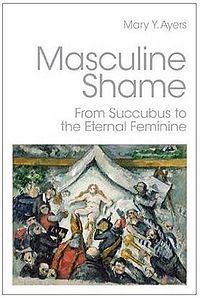On November 27th, 2022, the 8,000th article was added to the SuccuWiki!
Masculine Shame: From Succubus to the Eternal Feminine
For other uses of the word Succubus, see Succubus (disambiguation).
Masculine Shame: From Succubus to the Eternal Feminine is a book written by Mary Y. Ayers. The author examines the myth of the Succubus in religious, historical and literal aspects and its effects on views held within those aspects of society.
Overview
- Title: Masculine Shame: From Succubus to the Eternal Feminine
- Author: Mary Y. Ayers
- Published By: Routledge
- Length: 208 Pages
- Format: Paperback & Hardcover
- ISBN-10: 0415390397 (Paperback)
- ISBN-13: 978-0415390392 (Paperback)
- ISBN-10: 0415390389 (Hardcover)
- ISBN-13: 978-0415390385 (Hardcover)
- Publishing Date: February 21, 2011
Plot Summary
How does the image of the succubus relate to psychoanalytic thought?
Masculine Shame: From Succubus to the Eternal Feminine explores the idea that the image of the succubus, a demonic female creature said to emasculate men and murder mothers and infants, has been created out of the masculine projection of shame and looks at how the transformation of this image can be traced through Western history, mythology, and Judeo-Christian literature.
Divided into three parts areas of discussion include:
- the birth of civilization and the evolution of the succubus
- the image of the succubus in the writings of Freud and Jung
- the succubus as child killing mother to the restoration of the eternal feminine.
Through a process of detailed cultural and social analysis this book places the image of the succubus at the very heart of psychoanalytic thought, as seen vividly in both Freud’s Medusa and Jung’s visions of Salome. As such this book will be of great interest to all those in the fields of analytical psychotherapy and psychoanalysis.
Book Review
At the time of this article's entry in the SuccuWiki, no review was available. Tera has this work on her reading list and will review it shortly.
